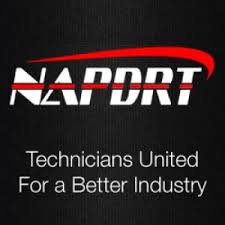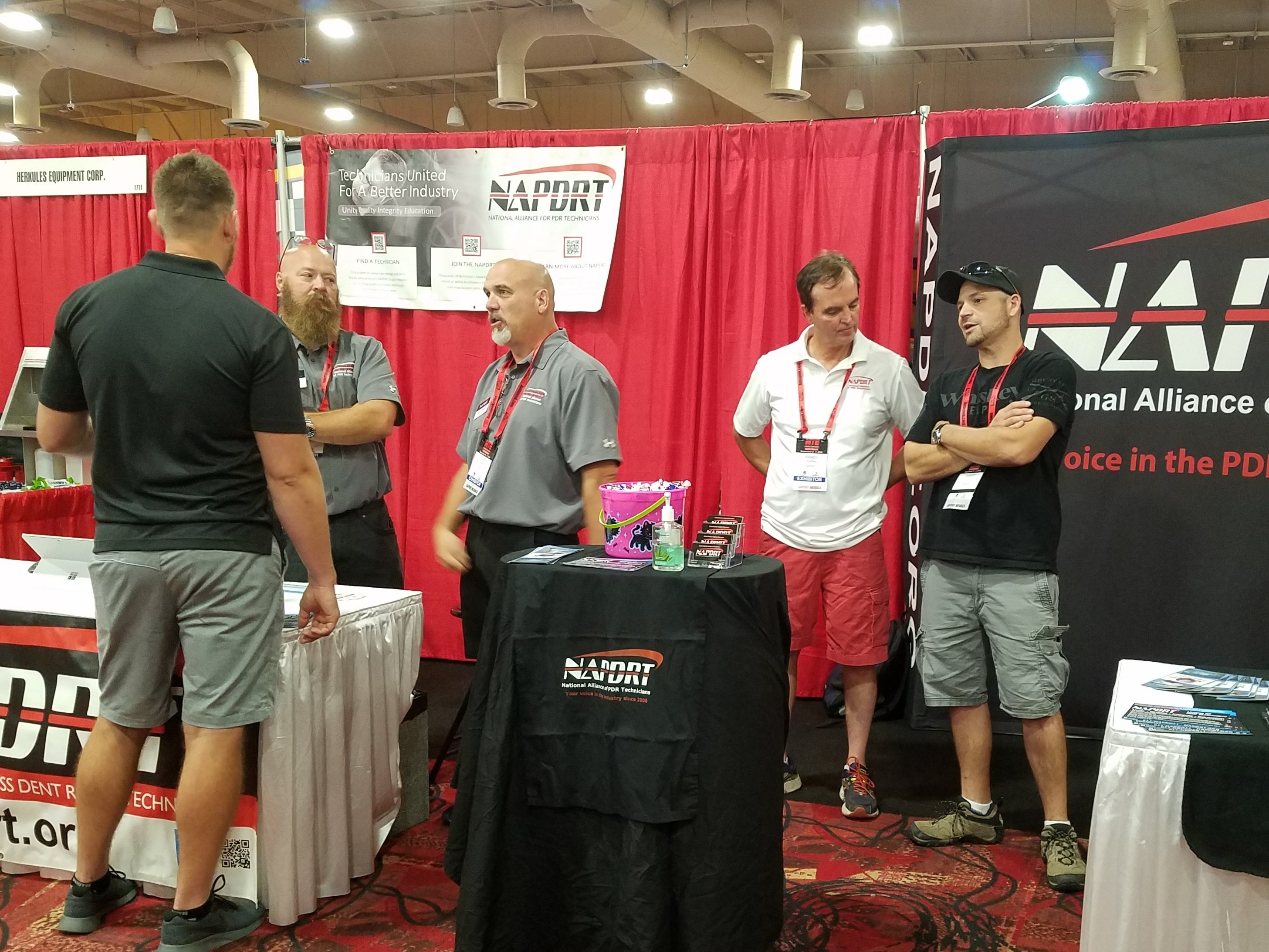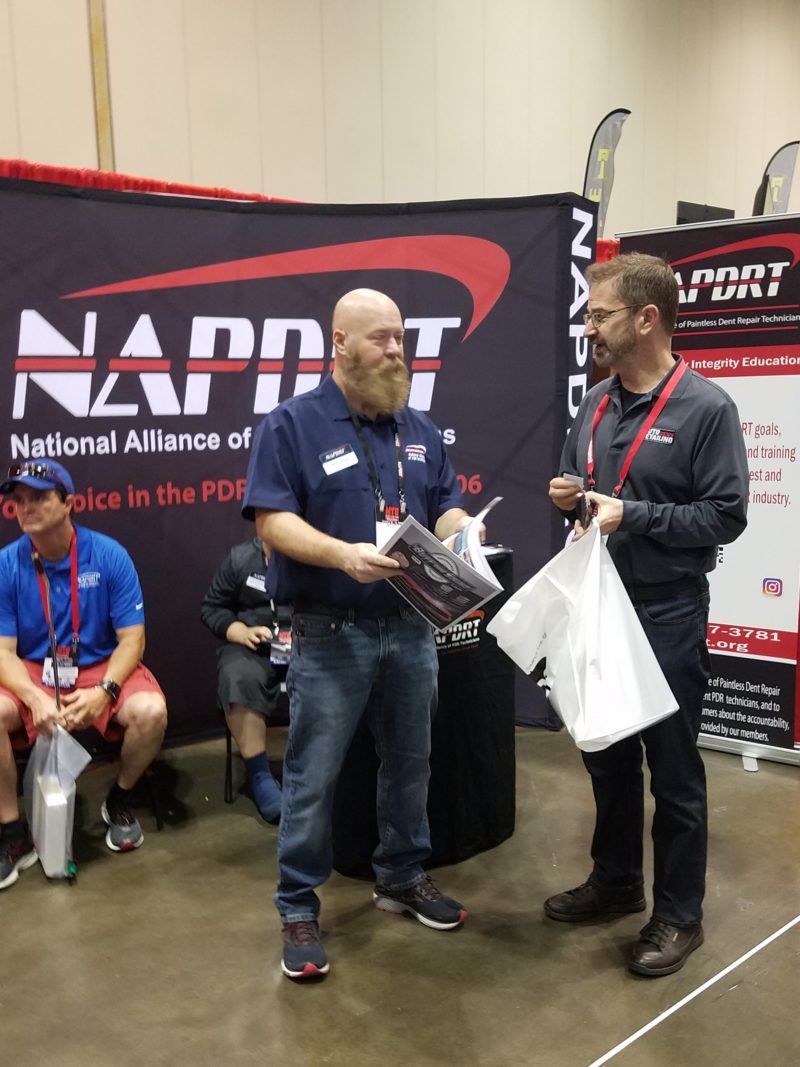
THE ACHES AND PAINS OF PAINTLESS DENT REMOVAL
A Cautionary Tale…
By Douglas L. Brown, Owner, Dent Clinic, NAPDRT Board Member
I started my career in PDR in 1991. Since then, I have learned much about what PDR can do to a person’s body. First off, paintless dent repair can provide a great source of income, which can help any PDR tech’s body and health, not to mention their family and way of life.
We should all know the very basics: good shoes, good posture and good health insurance. If it hurts, STOP, readjust and try another approach or angle.
What I can talk about are the seven PDR-related orthopedic surgeries I have had, and the surgeons’ comments, along with the physical therapists’ help and adjustments on how I use my own body.
Hands On
I developed bilateral carpal tunnel from tightly gripping my hand tools. As explained to me by a surgeon, bilaterally is caused when pronounced tightening and relaxing on one hand is prominent and the body compensates by actually giving it to the other hand. Sounds weird, but it happens.
That was my first surgery. They operated on my less dominant hand hoping the dominant hand would assimilate and heal. Such was not the case, and the other hand had to undergo surgery as well.
The rapid advancement we’ve seen in tool manufacturing has helped greatly. Whatever your hand tool of choice, try and remember not to give it the death grip.
Thumbs Down
I developed a condition on the lower joint of my left thumb from the constant use of hand tools. The surgeon knew this condition well, as he said he’d seen it on many mechanics who always have a wrench or ratchet in the palm of their hands.
The best way to describe this is to think of the pressure you are continually putting on your thumb when holding a wrench or ratchet and using force to break a bolt loose.
The same happens to us PDR techs, and as we get older, the continual pressure on the thumb will break down the joint, cause bone spurs and bone on bone to the thumb joint.
Both thumbs have now been repaired by a surgery called trapeziectomy with ligament reconstruction Tendon interposition and tightrope suspensionplasty—in other words they cut out the joint, grind off the bone spurs and harvest a tendon to hold your thumb in place.
Unfortunately, physical therapy has not given me an alternative way of using my hands, and this may be just old(er) age and arthritis. Once again, try not to give your hand tools the death grip.
Tennis Elbow
Now is when some of us older techs might start to take notice of our bones cracking or popping.
I developed lateral depicondylitis, better known as tennis elbow. After at least three to four Cortisone shots (which may also be called epicondyle injection) into the elbow, a few years later, shots were no longer an option.
Doctors or surgeons will only allow a set amount of shots before it will damage the surrounding areas of the elbow. Surgery was the next step.
This was my third surgery. But not listening to the physical therapist, I went back to work. Although painful, I still worked, until I tore a muscle the surgeon had stitched up. I learned very quickly to listen to the experts, or run the risk of having to go back under the knife to have it all repaired and stitched up again.
In addition to tennis elbow, there is actually golfer’s elbow (medial epicondylitis). It is a painful condition to the underside of the elbow, unlike tennis elbow, which is the outside of the elbow.
Physical therapy taught me this: Try and keep your elbows in, or at least as close to your body as possible.
Sore Shoulders
This was the most painful and longest rehab.
We all know the procedures for PDR, leverage and use of a fulcrum. Then comes that time (for me it was on a extended roof) that we reach way out there to try and reach that dent, using all the pressure we can to move the metal when we suddenly strain “something.”I’m sure I had done my fair share of straining, and after one push too many, I felt a sharp pain. Torn rotator cuff was the diagnosis.
The problem with rotor cuffs is it’s soft tissue and cannot be seen by X-ray; normally, it’s only seen with an MRI. The MRI showed that I had two tears, one probably from years before when I was younger and thought I was invincible, and the second one, which I felt when it tore.
Shoulders are where I will caution anyone to be very careful with how hard they push a dent with a rod. Try and keep as much pressure off the shoulders as possible. Physical therapy taught me what we all should know: Try very hard to stretch and limber up before you attack the huge roof or a complex smash dent.
All of these stories reflect hands, elbows, shoulders. Reading this you may think how unlucky I’ve been. Rather, it’s actually the opposite. I’ve been blessed with no back, knee or neck problems.
I’ve read many a story of others with bad backs, knees, etc. Those could be a real game changer for a tech’s livelihood.
In closing, this article is only meant to inform anyone of what can happen, It does not mean any of this will ever happen to you.
Averaging about one orthopedic surgery every other year, I have learned to schedule them in the fall or winter, as I mostly only chase hail in spring and summer. After any surgery, a patient needs the proper time for recovery and rehab. Recovery and rehab are the most important. Listen to your doctor(s) and your physical therapists.
Once again, This is not meant as any type of medical advice, only my story of PDR and orthopedic surgeries. Stay in shape, try to loosen up before work, and most of all, if it continually hurts, you may want to have a professional look at that specific part of your body.



